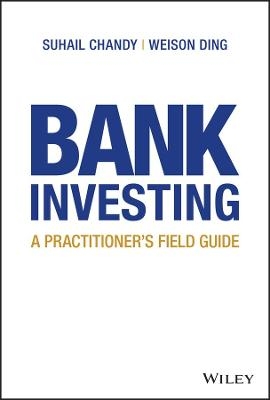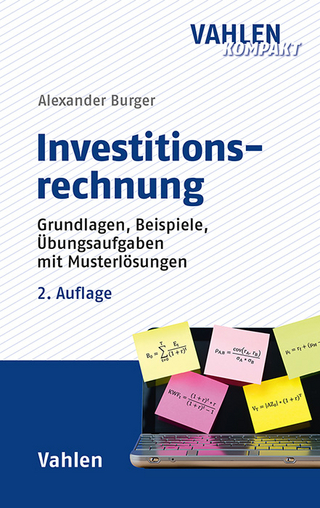
Bank Investing
A Practitioner's Field Guide
Seiten
2021
John Wiley & Sons Inc (Verlag)
978-1-119-72804-7 (ISBN)
John Wiley & Sons Inc (Verlag)
978-1-119-72804-7 (ISBN)
Bank Investing: A Practitioner's Field Guide offers you the essential toolkit to become a successful bank investor. It packages practical lessons, theoretical knowledge, and historical context, all into one compelling and hopefully entertaining book. The book includes conversations with investors and management teams. Investors include activists, financials specialists, credit investors, and multibillion-dollar asset managers. Management teams have a broad representation from the c-suite of a broad spectrum of participants ranging from a fintech to a bank with over $30bn in assets.
Banks are the oil that lubricates the economy. An understanding of how they operate is essential for analyzing any part of the economy since banks represent a large investing universe and control a sizeable portion of assets. With over 800 public tickers representing over $3 trillion market cap, banks are larger than several other industry groups. Banks are the largest financial intermediaries in the U.S., controlling $15 trillion in financial assets. Their relative size can amplify effects. For example, a small regulatory or environmental change can cascade and ripple through financial markets and have a major impact on the economy.
As fintechs gain in prominence, a fundamental grasp of topics related to banking will help enhance understanding of fintech.
Bank investing can be a fruitful pursuit:
The most successful investor of our times, Warren Buffett, has had a sizeable investment in banks over time (close to a third of his portfolio weight used to be in banks).
Banks allow you to make macro-economic bets since they are highly levered to business cycles.
Bank investing allows you to scale your knowledge, as they have relatively homogenized business models...
...at the same time, banks are diverse enough to drive meaningful dispersion in price performance. This divergence of performance can be taken advantage of by an astute and prepared securities analyst.
Banks are good vehicles to make specific investment plays on geographic regions, demographic trends (suburban to urban migration, aging), industries (agriculture, tech, energy), news flow (trade/tariffs, weather), real estate subsectors (NYC office, bay area apartments), and investing themes such as ESG, cryptocurrency, and venture capital.
Finally, fintech disruption is creating an investing opportunity to play the digital divide between banks that embrace technology successfully and those that get left behind.
Banks are the oil that lubricates the economy. An understanding of how they operate is essential for analyzing any part of the economy since banks represent a large investing universe and control a sizeable portion of assets. With over 800 public tickers representing over $3 trillion market cap, banks are larger than several other industry groups. Banks are the largest financial intermediaries in the U.S., controlling $15 trillion in financial assets. Their relative size can amplify effects. For example, a small regulatory or environmental change can cascade and ripple through financial markets and have a major impact on the economy.
As fintechs gain in prominence, a fundamental grasp of topics related to banking will help enhance understanding of fintech.
Bank investing can be a fruitful pursuit:
The most successful investor of our times, Warren Buffett, has had a sizeable investment in banks over time (close to a third of his portfolio weight used to be in banks).
Banks allow you to make macro-economic bets since they are highly levered to business cycles.
Bank investing allows you to scale your knowledge, as they have relatively homogenized business models...
...at the same time, banks are diverse enough to drive meaningful dispersion in price performance. This divergence of performance can be taken advantage of by an astute and prepared securities analyst.
Banks are good vehicles to make specific investment plays on geographic regions, demographic trends (suburban to urban migration, aging), industries (agriculture, tech, energy), news flow (trade/tariffs, weather), real estate subsectors (NYC office, bay area apartments), and investing themes such as ESG, cryptocurrency, and venture capital.
Finally, fintech disruption is creating an investing opportunity to play the digital divide between banks that embrace technology successfully and those that get left behind.
SUHAIL CHANDY manages the Fintech Catalyst strategy at Penn Capital and covers the Fintech, Financials, and Real Estate sectors. He is a CFA charterholder and has an MBA from Yale University. WEISON DING is Director at Piper Sandler, a leading investment bank in the FIG sector. He provides research, capital market, and trade execution resources for buy side clients. He graduated from The George Washington University.
Foreword
Acknowledgments
Chapter 1: Introduction
Chapter 2: Financial Statement Analysis
Chapter 3: Capital
Chapter 4: Credit
Chapter 5: Valuation
Chapter 6: Regulation
Chapter 7: Rates and Central Bank
Chapter 8: M&A
Chapter 9: Cycle
Chapter 10: Conversations
Appendix
About the Authors
| Erscheinungsdatum | 07.05.2021 |
|---|---|
| Verlagsort | New York |
| Sprache | englisch |
| Maße | 155 x 231 mm |
| Gewicht | 703 g |
| Themenwelt | Wirtschaft ► Betriebswirtschaft / Management ► Finanzierung |
| ISBN-10 | 1-119-72804-5 / 1119728045 |
| ISBN-13 | 978-1-119-72804-7 / 9781119728047 |
| Zustand | Neuware |
| Haben Sie eine Frage zum Produkt? |
Mehr entdecken
aus dem Bereich
aus dem Bereich
Allgemeines Steuerrecht, Abgabenordnung, Umsatzsteuer
Buch (2024)
Springer Gabler (Verlag)
CHF 39,20
Grundlagen, Beispiele, Übungsaufgaben mit Musterlösungen
Buch | Softcover (2024)
Vahlen (Verlag)
CHF 34,85


